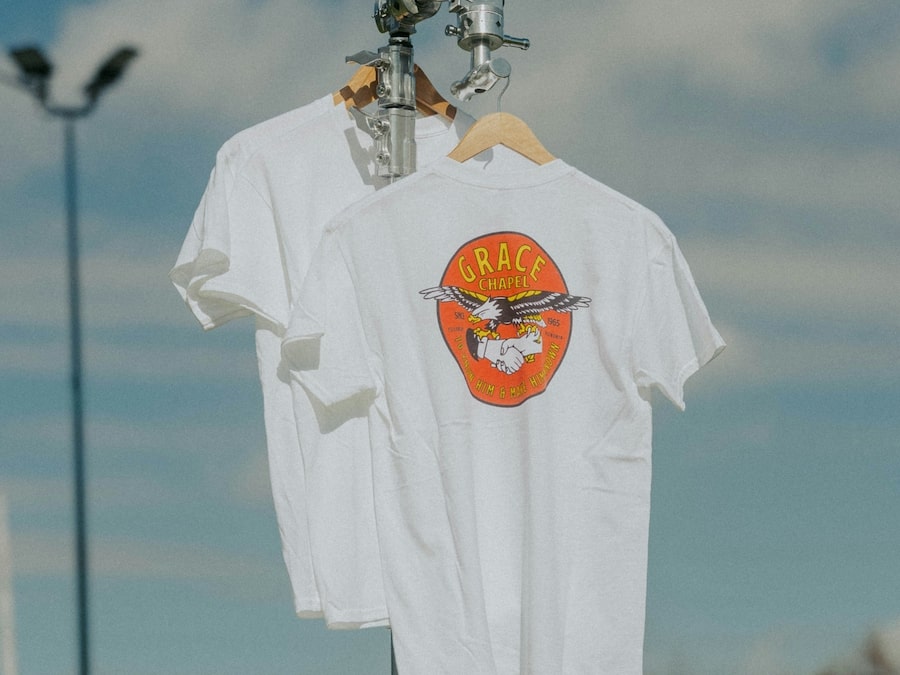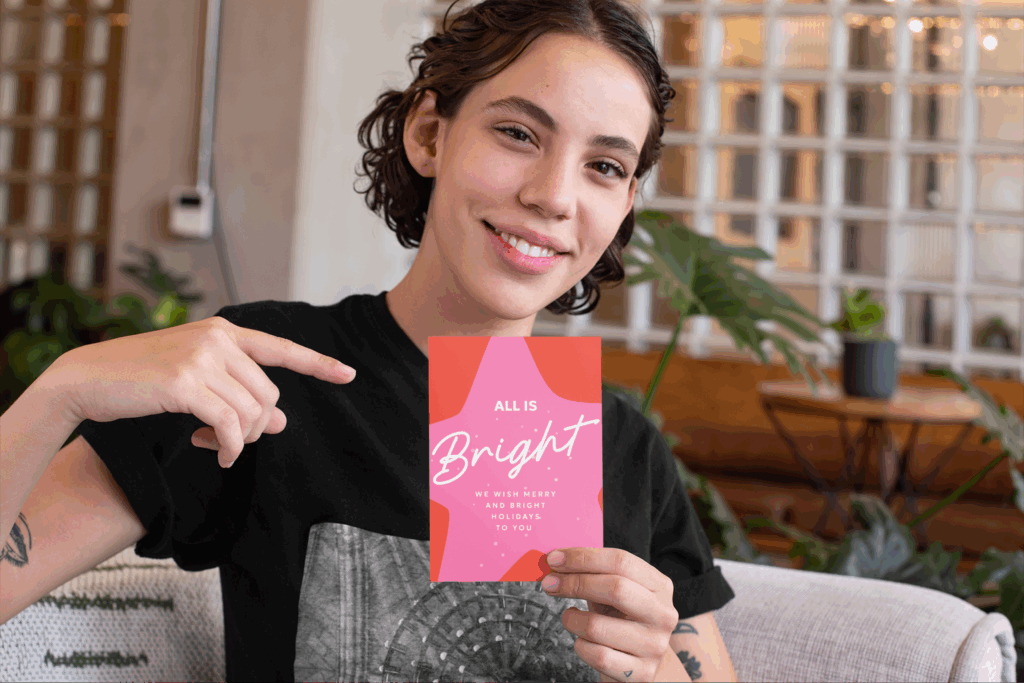Turn passion into profit with Printify
The creator economy is evolving fast, with bloggers, vloggers, social media influencers, and podcasters transforming their passions and content creation skills into profitable businesses.
Ever wondered how do content creators get paid?
Whether you’re just curious or ready to dive in yourself, this guide explains how to make money from content creation and offers key strategies for success.
This post may contain affiliate links, which means we may earn a commission if you make a purchase through those links. This comes at no additional cost to you.
A few key stats
- The creator economy is currently worth over $100 billion and is set to double by 2027.
- There are over 200 million content creators worldwide, with more than 162 million being amateurs.
- The largest group of creators (10.4 million) are micro-influencers with less than 10,000 followers.
- People now spend around 17 hours per week consuming digital content on social media, reflecting nearly a 50% increase from 2013.
Who are content creators, and how much money do they make?

In 2024, content creators mainly refer to social media influencers, podcasters, bloggers, and vloggers who focus on delivering digital content to a highly engaged audience and generating income from it.
The average yearly salary for content creators ranges from $90,000 to $100,000. Full-time content creators can earn up to $179,000, while part-timers make around $36,000, and hobbyists typically earn around $16,000 annually.
Macro-influencers (100,000 to a million followers) average $344,000 per year, while micro (1,000 to 100,000 followers) and mid-tier (50,000 and 500,000 followers) influencers bring in $45,000 and $129,000 each year. A single sponsored video with 10,000-50,000 views can make between $180 and $2,200.
12 Ways to make money as a content creator
Enough with the stats; let’s explore the different ways content creators are making money. From influencer marketing and brand sponsorships to subscription content, platform creator funds, and other income streams, we’ll cover them all.
1. Partnering with brands
Creators with a following can earn through brand partnerships featuring brand’s products in their social media posts in exchange for payments, products, or gifts. Even nano-influencers with 1,000 to 10,000 followers can make $10-$100 per post. Micro-influencers generally charge $100-$500, while mega-creators (over a million followers) can charge upwards of $10,000 for their larger audience.
Brand sponsorship rates vary based on factors like location, engagement, brand size, and platform. Creators on Facebook and YouTube typically earn the most from sponsored posts, while those on X and TikTok charge lower rates.
Only partner with brands that align with your values and audience. Many brands cover topics and niches your community might not agree with, so be careful who you enter brand deals with.
2. Building paid communities (subscriptions)
Other content creators earn money through paid communities, like subscriptions and memberships. They offer exclusive content, charging members a monthly or annual fee. These groups provide subscribers with perks such as
- behind-the-scenes insights,
- one-on-one interactions,
- question-and-answer sessions,
- early access to new material,
- networking opportunities with other members.
Creators can build and manage a community using their websites or Patreon. Facebook and Instagram subscriptions are also good options, as they allow creators to monetize their existing social media followers without migrating them to a different platform.
While membership fees vary, a typical monthly subscription runs between $25 to $50. So, with a paid group of 100 members, a successful creator can pull in $3,000-$5,000 monthly from membership fees alone.
3. Selling merch

Creators can earn money by selling merchandise like t-shirts, mugs, and hoodies, as fans like owning items that connect them to their favorite creators. To estimate earnings from merchandise sales, use the Sellfy calculator app, built using data from over 2,500 linked YouTube stores.
According to Sellfy, a content creator with 1,000 monthly views could earn between $1 and $20 from AdSense. However, if that creator starts selling products, their potential earnings can increase to $100-$580, nearly ten times more than those who rely exclusively on ads.
One of the easiest ways to start selling merchandise is through print-on-demand (POD) platforms like Printify. With Printify, creators can easily upload their logos or designs onto products, while the platform manages everything else – from production and printing to shipping and returns.
The best part about POD is that it’s completely risk-free and works well as a source of passive income for creators. You only pay Printify when an order is placed and shipped. This model allows creators to focus on designing and marketing their products without the burden of upfront costs or inventory management.
Read more: How to create Spotify merch, YouTuber merch, or Streamer merchandise.
Make it happen today!
4. Teaching online courses

Online learning is rapidly growing, hitting an impressive $185 billion this year alone. Creators have used this opportunity to launch paid personalized coaching sessions to their social media followers and sell online courses on platforms like Skillshare, Udemy, or Thinkific.
YouTuber Flo Muller launched his ‘YouTube Master Course’ on both Skillshare and Udemy, which attracted around 2,000 students. With an enrollment price of $49 on Udemy, a quick calculation shows that Flo earned almost $100,000 from this single online course.
Interestingly, Flo isn’t a massive YouTube star; he has just 26,000 subscribers on his channel. This proves that even small creators can make money and reach potential customers by offering something exclusive and useful.
5. Selling digital products
Other content creators offer a wide variety of digital products to their followers, ranging from eBooks and templates to stock photos – the options are endless. Typically, these products relate to their specific niche. For instance, a fitness-focused Instagram influencer is likely to offer a paid workout guide or a meal prep planner. Many creators sell their books through platforms like Amazon, Gumroad, or even their own websites. They can also include links to their books on their social media platforms like YouTube or Instagram to make it easy for their followers to buy.
Take Alfie Deyes, for example, a vlogger with 3.6 million subscribers. He sells his book, “The Pointless Book 2,” to his large following through YouTube. If you check the notes below, you’ll see clickable links that take you right to his Amazon product page. This is an excellent way to promote your personal brand and products by creating content on various digital platforms.
6. Affiliate marketing
Affiliate marketing allows creators to promote a company’s products and earn commissions on sales made through their referral links. For example, many blogs that regularly review products include affiliate links to retailers like Amazon. When someone clicks the affiliate link and makes a purchase, the blog owner gets a share of the sale.
This strategy is popular because not all creators have their own products, so they enter brand partnerships and earn a cut of sales.
Blogging dominates affiliate marketing, accounting for 80% of the activity. With average affiliate marketers generating over $1,000 monthly, Printify’s affiliate program is an ideal side hustle for creators looking to diversify their income.
7. Selling content and consultation services

Freelancing platforms like Upwork, PeoplePerHour, and Guru.com offer content creators new revenue opportunities.
These platforms connect freelancers with clients seeking specific skills, allowing writers, video editors, and life coaches to sell their services for a fixed price or hourly rate. For instance, a writer might charge $100 to $300 for a 1,000-word article, while a video editor could earn $200 to $300 for editing a five to ten-minute video.
Upwork’s recent survey highlighted that 13 of the top 25 highest-paying freelance jobs right now involve content creation of some form. On average, hourly rates for these freelance jobs range from $21 to $48, and other creators, like media-buying professionals, can charge up to $100 per hour.
8. Ad monetization
Creators monetize their work by displaying ads on their content partnering with platforms like YouTube, Google AdSense, or Mediavine. Two primary methods are used for ad monetization: Cost Per Mille (CPM) and Cost Per Click (CPC). With CPM, creators receive a fixed amount for every 1,000 ad impressions their content generates. CPC, on the other hand, allows creators to earn money each time a user clicks on an ad.
Instagram content creators typically earn between $10 and $500 for each social media post with ads, while TikTok creators can make around $20 to $40 for every million views they receive. YouTube creators earn between $2 and $12 per 1,000 views.
Income from ad monetization can vary based on the following factors:
- Location of the channel and user location
- Audience demographics
- Channel niche and seasonal changes
- Types of ads
- Advertiser demand
- User device
- Number of ads
- Currency exchange fluctuations
These platforms have strict requirements that every content creator must meet to be eligible for ad monetization. For instance, both Facebook and TikTok require creators to have at least 10,000 followers, along with a specified number of videos and views.
9. Speaking at events

‘Gurus’ in the creator industry earn substantial incomes by speaking at various events, webinars, and workshops. These events typically feature established creators sharing their stories and revealing content creation secrets that helped them succeed.
Apart from gathering knowledge, participants also get to network with other like-minded creators. To give you an idea, Mr. Beast charges a whopping $200,000 just to speak at an event.
This, however, doesn’t mean you need to have 300 million followers on your YouTube channel. Even micro or nano influencers with a steady income and unique experiences can share their stories in exchange for financial compensation. It’s all about having something valuable to offer and being willing to help others.
10. Podcasts
Podcasts have now become one of the main sources of income for many creators. Audio platforms like Spotify, RedCircle, Fusebox, and YouTube allow creators to discuss topics they’re passionate about and interview guests.
Many successful podcasters use their platforms to generate ad revenue, promote affiliate products, and sell merchandise. Joe Rogan, for instance, has his own merchandise store Higher Primate selling items like apparel and accessories.
11. Combining multiple revenue channels

Most creators use the freedom to integrate multiple income channels simultaneously. For example, repurpose your Instagram Reels on TikTok or YouTube. LinkedIn posts can also be shared on Facebook, and the same post idea can be turned into blogs or video content.
You can sell both affiliate items and your own products on your blog. Feature sponsored content, earn revenue through AdSense (just steer clear of too many ads), and include affiliate links, all from just one YouTube video with a good view count.
Cross-promotion with fellow creators is also a smart way to tap into each other’s customer base and generate revenue. This is how creators multiply their earnings with little additional effort.
12. User Generated Content (UGC)
User Generated Content (UGC) refers to any content, whether it’s a photo, video, review, or text, that’s created by customers using a product or service. Unlike influencers, who are paid to promote products to their audience, UGC creators don’t always need a large following.
So, it’s not a scripted ad. You basically create content by giving feedback, and the realness makes UGC far more relatable and trustworthy than a paid promotion by a social media influencer who, let’s say, jumps from cooking to fitness just for the sake of a brand deal.
Beginner UGC creators can charge between $25 to $250 per social media post, while established creators can charge between $1,000 and $5,000 per post.
Skills and essentials content creators need
If you’re considering a career in content creation and want to shift into a creative role, you’ll need to master a few essential skills and gather some essential automation tools for success.
1. Writing and storytelling
Strong writing forms the foundation of engaging storytelling, whether you’re crafting dialogue, scripts, or narratives. If writing isn’t your strength, hire a skilled writer to handle it for you. You can also use tools like Grammarly, Scrivener, or Hemingway Editor to improve your writing and make it more polished.
2. Search engine optimization (SEO)
You could have the best content in the world, but if no one sees it, it’s not going to do much good. SEO makes sure your content and personal brand get found by more people on search engines like Google, Yahoo, and Bing. While SEO is especially important for driving traffic to your website, you’ll also need it for social networks like YouTube and Facebook.
Creators often use SEO tools like Ahrefs and Semrush for content strategy and planning their marketing campaigns. On the other hand, tools like SurferSEO and Frase are used to precisely optimize content for search engines.
Watch our SEO Guide on YouTube for extra tips on content marketing, creation, and optimization.
3. Social media marketing (SMM)

Social media marketing is the use of social media channels to achieve marketing objectives. It’s particularly crucial for audio and video content creators. If you’re serious about growing your social media presence, keep an eye on what top creators are doing, the trends they follow, and the content creation tools they use.
Staying on top of the latest content trends is key to staying relevant and keeping your target audience engaged on social channels.
Check out our Clicks to Riches show and learn how to Supercharge your sales with social media
4. Content schedule
Plan your content ahead to make sure of consistent delivery. Use tools like Trello, Asana, or Notion to create a content calendar. Automate your posts with Buffer or Later to maintain a regular posting schedule. Consistent content delivery keeps your audience engaged and increases your visibility.
Allocate one day each week to plan and schedule your upcoming content. This helps you stay organized and prevents last-minute rushes.
FAQs
Instagram doesn’t pay creators solely based on the number of views. It depends on factors such as the percentage of views that lead to comments, shares, and likes. Studies show that a video with 1,000 views may help Instagram creators earn between $0.01 to $0.05, depending on engagement.
Content creators typically don’t receive payment solely based on views. Instead, they earn revenue through ad views, user engagements, and various monetization strategies like paid ads, memberships, sponsored content, affiliate or influencer marketing.
To monetize your content through the YouTube Partner Program, you must have at least 1,000 subscribers and meet one of the following criteria: 4,000 watch hours within the last 12 months or 10 million views on Shorts in the past 90 days.
Content creators earn on Instagram through brand partnerships, affiliate marketing, selling digital products, and offering exclusive content.
TikTok creators make money from ads, affiliate partnerships, merch, virtual gifts, tips, and the TikTok Creator Rewards Program.
YouTubers generally earn around $18 for 1,000 views, while their average hourly earnings hover around $57.80.
Final thoughts
If you have a knack for promotion, consider exploring affiliate marketing or making UGC videos. If you love to research and delve deep into new ideas or concepts, you might consider writing or producing video content. Once you have a solid foundation to build on, you can easily incorporate other income strategies later on.












